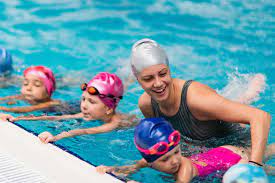Each year, hundreds of Australians lose their lives to drowning—an entirely preventable tragedy. Whether it happens in a backyard pool, at the beach, or inland waterways, the heartbreaking truth is that a few simple steps could have made all the difference. Among them, education stands out. That’s why a water safety course is no longer just something for swim instructors or lifeguards. It’s something everyone should consider.
In 2023 alone, the Royal Life Saving Society Australia recorded over 280 drowning deaths nationwide. Many of these occurred during recreational activities. Most were preventable. These figures are more than statistics—they’re stories of lives cut short, families shattered, and communities left grieving.
Why Is Water Safety Training So Important?
Australia is a water-loving nation. From Bondi Beach to the Yarra River, water is part of our national identity. But with it comes risk. Rip currents, cold shock, and overconfidence in swimming ability contribute to accidents year after year.
A water safety course teaches more than just how to swim. It equips individuals with the knowledge to:
- Recognise and avoid hazards.
- React swiftly in emergencies.
- Perform basic rescues without putting themselves in danger.
- Understand the role of supervision—especially for children.
It’s not about fear. It’s about being prepared.
Who Should Take a Water Safety Course?
Anyone who spends time around water—at home, on holidays, or at work—can benefit. Some of the most at-risk groups include:
- Parents and carers of young children
- Teenagers and young adults, particularly males aged 15–24
- Older adults, especially those with underlying health issues
- New Australians unfamiliar with local water conditions
- Recreational boaters, paddlers and fishers
Even if you’re a strong swimmer, knowing how to prevent accidents, rescue others, or administer CPR can save a life.
Here’s where you can learn more about a comprehensive water safety course.
What You Learn in a Water Safety Course
The best courses balance theory with hands-on practice. Topics often include:
1. Risk Recognition
Identifying danger zones, understanding weather conditions, and knowing when not to enter the water.
2. Safe Entry and Exit
Using the safest techniques to enter and leave water bodies—especially unfamiliar or rough conditions.
3. Survival Techniques
Floating, treading water, and conserving energy while awaiting help.
4. Rescue Skills
Learning to help others without becoming a victim. This includes reach and throw techniques.
5. First Aid & CPR
What to do in the critical minutes before professional help arrives. Includes water-specific first aid and child resuscitation.
If you’re involved in school excursions, community programs, or aquatic fitness, these skills are more than just helpful—they’re essential.
Learn what’s involved in a water safety course and how it can make a difference.
Real Lives, Real Consequences
Let’s be blunt: drowning doesn’t look like the movies. It’s silent. It’s fast. And often, it happens with people nearby who simply didn’t realise what was happening.
Take the case of Liam, a fit 27-year-old who slipped from a kayak on a calm lake in Victoria. No one knew he wasn’t wearing a life jacket. By the time his mates noticed he wasn’t beside them, it was too late. A water safety course could have taught him—and his group—how to respond, what gear to use, and how to avoid the situation altogether.
These are the lessons that stay with you for life. And they might save one.
Courses Are More Accessible Than Ever
Gone are the days when safety training was just for surf clubs or elite swimmers. Today, you’ll find courses for:
- Schools
- Workplace safety programs
- Community and CALD (Culturally and Linguistically Diverse) groups
- Parents of toddlers
- Recreational water users
Some even offer blended delivery options—online theory plus practical in-person sessions.
💡 Check out a local water safety course and explore your options.
What the Data Tells Us
In a report by the Australian Institute of Health and Welfare, drowning remains a leading cause of accidental death in children under five. Read the full report here.
And here’s something sobering: 80% of drownings occur in inland waterways, not at the beach. Think rivers, creeks, and dams. It’s not about being caught in the surf—it’s about being unprepared in the everyday.
Final Thought
A water safety course isn’t just for emergencies—it’s a life skill. One that builds confidence, creates safer communities, and prevents heartache. Whether you live near the coast, own a backyard pool, or spend weekends fishing with your mates, it’s a small commitment with massive rewards.

